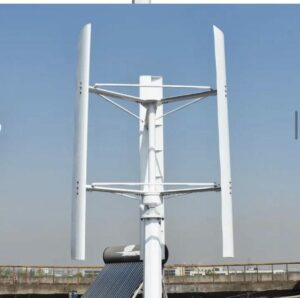
Introduction
In today’s environmentally conscious world, the use of renewable energy sources is becoming increasingly important. Wind energy, in particular, has seen a surge in popularity, especially in wind-rich countries like Ireland. However, the installation of wind turbines is subject to specific planning permissions and laws. This article aims to provide a comprehensive overview of these regulations in Ireland, focusing on small wind turbines suitable for residential areas.
Understanding Planning Permission for Wind Turbines
Planning permission is a crucial aspect of installing wind turbines in Ireland. Fortunately, certain small-scale wind turbines are exempt from these requirements, making it easier for homeowners to contribute to renewable energy efforts. The key conditions for this exemption are as follows:
- Rotor Diameter and Mast Height: To qualify for exemption, wind turbines must have a mast height not exceeding 10 metres and a rotor diameter of 6 metres or less.
- Clearance and Distance Requirements: There should be a minimum of 3 metres clearance between the rotor’s lower tip and the ground. Additionally, the turbine must be installed at a distance equal to its total height plus one metre from the nearest neighbouring boundary.
- Noise Regulations: Noise levels at the closest inhabited dwelling should not exceed 43 decibels (dB(A)) or 5 decibels above the background noise level.
- Limitation on Number and Placement: Only one turbine is allowed within the curtilage of a house, and it must be positioned behind the front wall of the house.
- Design and Appearance: All components of the turbine should have a matt, non-reflective finish. The blades should be made of material that does not interfere with telecommunication signals. Furthermore, advertising or logos on turbines are prohibited.
These conditions ensure that the turbines are installed safely and minimize their impact on the surrounding area.
Exclusions and Considerations
It’s important to note that building-mounted turbines are not included in these exemptions due to potential issues such as visual amenity, noise, vibration, structural damage, safety concerns, and poor installation. However, it is still possible to apply for planning permission for such installations through the standard procedure.
Final Thoughts
Understanding and adhering to these regulations is crucial for anyone considering the installation of a wind turbine in Ireland. While these laws might seem restrictive, they are designed to balance the benefits of renewable energy with the need to protect residential areas from potential adverse impacts.
By following these guidelines, homeowners can contribute to a greener future while ensuring the safety and comfort of their community. Remember, when in doubt, it’s always advisable to consult with local authorities or a legal expert to ensure compliance with all regulations.
Conclusion
The push towards renewable energy sources like wind power is a significant step in Ireland’s environmental strategy. By simplifying the planning permission process for small wind turbines, Ireland is encouraging its citizens to participate in this green revolution. As we continue to embrace renewable energy, understanding and complying with these regulations will be essential for sustainable and responsible development.
